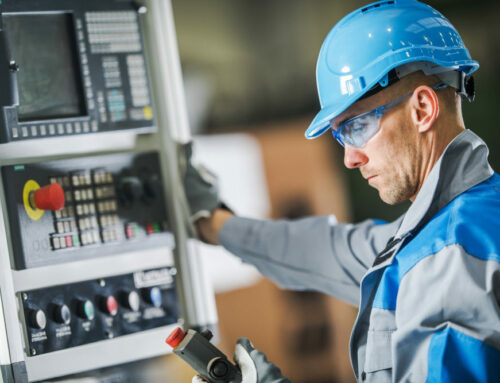When working on an industrial worksite, the most important thing to do is protect your head. Head injuries are one of the most common causes of fatal accidents on the job. Your head is vulnerable to impact, bumps, and shock that can affect the delicate, fragile brain that sits inside. The brain is so soft it can be damaged by compression, which causes it to come in contact with the inside of the skull. Proper head protection absorbs the force of impact and protects your brain from serious injury. It’s important to select the right PPE to protect your head and brain. This article will discuss the importance of head protection in industrial safety and the equipment that will do the best job of protecting your head while on a work site.
Risk Management
Removing any hazards from a worksite or making them less severe is the first step in risk management. Assessing the potential risks and taking the necessary steps to reduce them until they are as low as you can manage is how you prevent risks before they happen. If you’ve done your part to lower the hazards but still need protective head protection, choosing gear that will perform the best for you is detrimental. Following the manufacturer’s complete instructions for helmets and other head protection will ensure that your head protection functions correctly. It’s important to pay attention to the specific regulations for head protection in the area you are working because it could differ from other places you have worked.
Helmets: The Most Popular Head Protection
The best way to protect your head is with a good helmet when doing industrial work. Helmets are also paired with other PPE – eye protection, visors, and ear protection – to increase safety while at work. Choosing a comfortable, proper-fitting helmet will make it easier to wear one for hours a day. Here are a few things to know about helmet care, cleaning, usage, and a proper fit to ensure you select the right one for you.
Proper Fit – A helmet that fits correctly should leave a little breathing room for air to flow freely in and out. Many helmets are designed to be adjusted to the user’s head shape and size. A common feature is a sliding mechanism that allows you to adjust how tight the helmet is. When you size your helmet, you want to find a fit that feels secure but not too loose or painfully tight. You haven’t adjusted your hard hat to the appropriate size if you begin to notice skin abrasions after wearing a new helmet.
Strap Adjustment – Like the helmet’s fit, the strap should be secure but not too tight. Adjust the harness suspension to leave room between your head and the helmet. There should be approximately 1 to 1 ¼ inches of clearance between your head and helmet. Always examine the strap whenever you put the helmet on to ensure it’s not frayed or tattered.
Wear and Tear – Check for cracks in the outer covering every time you put your helmet on. Cracks, gouges, chalking, or flaking are signs of deterioration and can be problematic. Deterioration causes your helmet to break when hit, slammed, or knocked, potentially hurting you.
Cleaning – Cleaning your hard hat is easy; mild soap and warm water are all you need. Stronger cleaners could damage the surface and potentially weaken the helmet’s shell. You want to store your helmet away from contaminates, debris, and dirt that could damage it. Store your helmet out of direct sunlight and heat because they can damage the outer shell and accelerate deterioration.
Replacement – Time, usage, and discretion influence when you should replace your helmet. You want to replace your helmet when or before its capability to protect you effectively is significantly reduced. If you are unsure of when that is, the manufacturer can help you determine if it is time for a replacement. Most manufacturers have recommendations specific to their helmets on when to replace them. Typically, a safety helmet’s lifetime is approximately 2 to 5 years. If your helmet shows significant wear and tear before then, you should replace it.
Head Protection Standards
OSHA has specific requirements for head protection in the workplace and states that it is the employer’s responsibility to ensure that workers wear proper head protection. OSHA has two standards for safety hat requirements: 29 CFR 1910.135, which pertains to industrial workers, and 29 CFR 1926.100, which applies to construction, demo, and renovation workers. Both standards state that workers have to wear hard hats or safety helmets if there is any potential risk of head injury.
Choose Extreme Safety!
A safety helmet is a necessary part of the workday when working in the industrial field. A helmet helps protect your head from impact, shock, and serious injury. Most importantly, it can save your life! Wearing a hard hat may be uncomfortable at first, but it’ll become second nature with a few adjustments. Call us at (310) 856-0166 or visit our website to shop for safety equipment, including the perfect helmet!


















